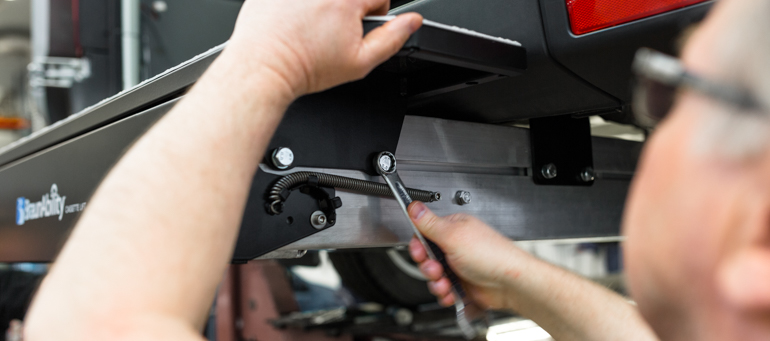Quick service and repair
Is your lift damaged? Don't worry, your vehicle could be back on the road within the hour. Thanks to the mounting bracket and quick release connections for the fluids and electronics, it's easy to replace a damaged lift.
In our effort to take simplicity even further, we designed the A-series lift to use only relays and switches, most of them so common, you can find them at your local petrol station.
